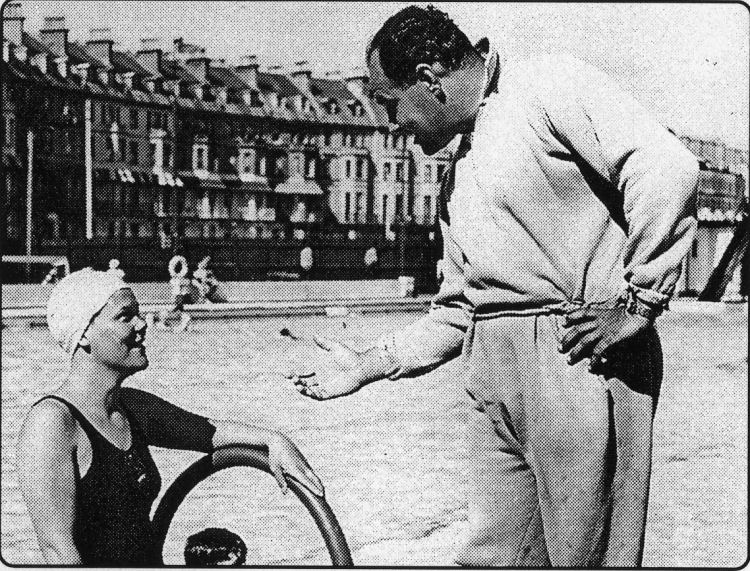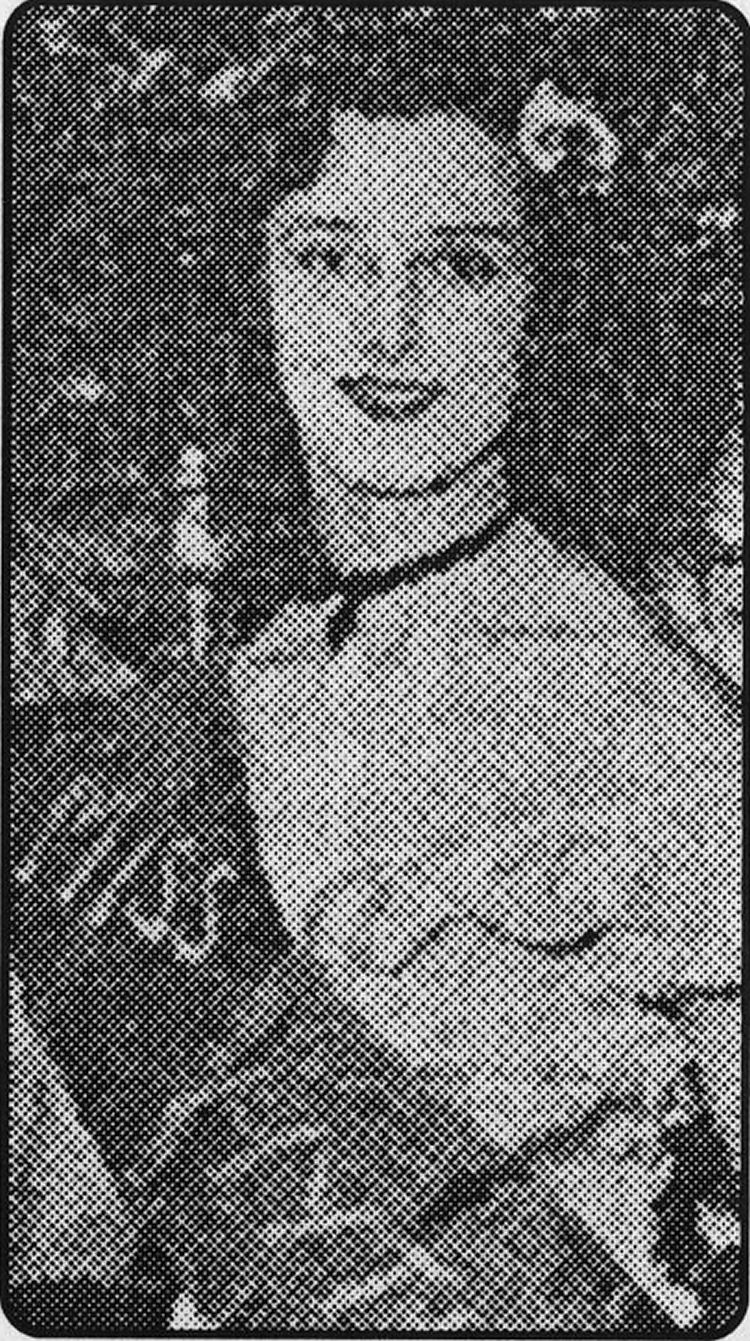
Published 1 August 2002


Rockett man
ONE OF Folkestone’s most colourful characters of the past 50 years was
popular Channel swimmer Sam Rockett He became a familiar figure at the old
outdoor swimming pool, which used to be part of the seafront amusements
complex, following his 1950 swim race success.
He was the first Briton home in the first Daily Mail International Channel
Race that year - one of nine finishers out of 24 competitors.
Sam's time from Cap Gris Nez to England was 14 hours 17 minutes. He was
trained by Ted Temme who completed solo swims in 1927 and 1934.
Encouraged by this success, the prominent water polo player ditched his job
as a factory foreman, in a Lancashire ICI Plastics plant, to become a
training supervisor for the Daily Mail Channel Swim Race in 1951, and was
made assistant manager of the Folkestone open-air pool, then headquarters of
the Channel Swimming Association.
He fought to get an Indoor pool for the town and for years helped keep
facilities open at the old Marina, which had opened in 1898. Later enlarged,
with a much larger indoor swimming pool built in front of the main building,
it was demolished in the mid-1960s.
Sam was appointed Technical Adviser and trainer for the Butlins Channel swim
races from 19S2 and his involvement with training Channel swimmers continued
until about 1964. His notable successes included Antonio Abertondo, the
Argentinian who, In 1961, became the first person to make a non-stop,
there-and-back swim. It took him 43 hours 10 minutes to swim to France and
back again!
Sam became an avid collector of photographs and newspaper and magazine
articles about Channel swimming and amassed a great deal of archive material
relating to the succession of Channel swim races, together with
correspondence from some of the most famous swimmers of the ‘Golden Age of
Channel Swimming,’ in the 1950s and 60s, when the swims were front page news
in daily papers and figured in Pathe news reels in cinemas.
Other material relates to Sam’s various guest appearances and advice given
to the BBC, the press and even Hollywood films, such as “Stormy Crossing”
starring John Ireland, made on location in Folkestone in 1951. Sadly, Sam
Rockett died in Folkestone, in November 1989, aged 70.
‘Fitting memorial’
Called “The Sam Rockett Collection” the memorabilia has all been presented
to Dover Museum, by Sam’s children, Janet Johnson, of Sandgate and Gerald
Rockett. It is an invaluable addition to their already extensive Channel
swimming collection.
It would be nice if copies of some of the material could be presented to
Folkestone Museum.
Mark Frost, senior assistant curator at Dover Museum, thanking the family
for their gift, said it was a remarkable collection of national importance
and a fitting memorial to a man so influential in long distance swimming.
“To swim the English Channel is still the ultimate desire of all serious
swimmers,” he said.
With improved knowledge of training, diet, tides and other factors, it is
now a bit easier to swim the Channel. “But even so, more humans have
travelled into Outer Space than have swum the Channel!"
MEMBERS of Folkestone & District Local History Society are looking forward
to Wednesday, August 7 when Ann Nevill will be giving a talk called
“Education in Victorian Folkestone,” at their monthly meeting.
The Society meets at the Holy Trinity Church hall, in Sandgate Road, at
7.30pm. New members and visitors are welcome. More details about the
Society’s meetings this year can be obtained from the secretary, Peter
Bamford, of 7 Shorncliffe Crescent, Folkestone, whose phone number is 01303
223337.
SAM Rockett gives advice to fellow Brit Jennie James as she trains for the
1951 Daily Mail Channel Swim Race at the old Folkestone outdoor pool. The
picture is from the Sam Rockett Channel Swimming Collection at Dover Museum.
Sam Rockett, late of Cobay Close, Hythe, was well known in later years for
his Frogmore Tea Rooms in Sandgate Road Folkestone which he owned between
1964 and 1982. The home-baked food won the tea rooms a glowing accolade in
an Egon Ronay guide
Miss Hythe” debacle
FIFTY years ago there was startling sequel to the crowning of Miss Hythe,
Dorothy Wood, 22, of Dymchurch Road, pictured left.
She had been Miss Hythe less than a day when the winner's sash was taken
from her.
And it wasn't her fault. Crowned Miss Hythe before, in 1948, she had been
encouraged to enter the contest again, so didn't think to check the wording
of the rules.
But during celebrations which followed her selection and a dance into the
small hours, it was pointed out the rules excluded the selection of past
winners of the title and the next day the organis-
ers had to break this to Miss Wood, who had also been a previous Venetian
Fete Carnival Queen.
The title went instead to runner-up Valerie Goddard, 17, of Seabrook Road,
while third in line, Valerie Johnings, 18, of St George's Place became maid
of honour.
All seven competitors in the contest appeared together on stage at the Ritz
cinema the following night when the organisers' gaff in inviting Dorothy
Wood to enter was publicly admitted and Valerie Goddard's selection
announced!
Dorothy's calm acceptance of the situation was praised by mayoress Miss
Barbara Stevens.
 |
Council gets more time to launch tram service
«< QAOTHE Town Council received sanction from the Government for an
extension of time in which to start work on a Council Tramway service
until 1904. The Herald was urging support for the fifth annual
Folkestone Cricket Week and the town’s host cricket club, saying that if
It was to thrive there would have to be more pub-lic Interest Meanwhile,
popular writer Felix was looking forward to the day wtien Folkestone
might host a South Coast Sea Angling Festival or Championship. But first
of ail the town needed to form an angling club like that in Deal or one
being formed In Hastings. There was no doubting the assets of Folkestone
as far as angling was concerned, he said. The editor welcomed the
opening of the grand Hotel Imperial at Hythe with its associated golf
course and said what a popular attraction It would be, particularly
among men of the City, in London. It marked the beginning of a new era
of prosperity In the district, he said. Harbour extension works, after
meeting with some excavation problems, were expected to be completed In
six months. Why did Folkestone people write so few letters to local
papers a Herald writer asked.
|
Celebrations as miniature railway opens up Marsh
«f Q07 THERE were over 500 dancers at what was JL+Jrnm I described as
the first ball held at the Leas Cliff Hali, with dancing to the music of
Folkestone Municipal Orchestra. The mayor, pleased at the success,:
announced that another would be held the following week. On the sports
front there was good news, with the offer from the Kent County Cricket
Club of one of three county matches; Most popular choice seemed to be an
early June match, Kent to meet either Northants or Gloucester. A big
disappointment, however) was that the weather forced the abandonment of
a match in Folkestone between a New Zealand XI and an Army XI. The
visitors completed their Innings and the Army were five runs short of
their total, for the loss of only five wickets, when mist stopped play
on the first day and there was no play next day. Folkestone Rowing Club
won the senior fours and junior sculls events and were second and third
in the senior sculls, at Hastings Regatta. Earl Beauchamp, Lord Warden
of the Cinque Ports opened the Romrtey, Hythe & Dymchurch Railway
squeezing his large frame into a carriage for the first run. Public
services commenced the following day, giving the Marsh what wa&
described as Its first “upto date link with civilisation by modern
transport."
Once popular church laces axe after court hearing
|
«| A CHURCH court, sitting in Folkestone,
.L9^7fcdeclded the town’s 80-year-old church of St Michael's and All
Angels, closed since 1940, should be demolished and the Husband Memorial
Hall, opposite, converted for church services, it was said restoration
of the old war-damaged church, which had been repeatedly attacked by
vandals, would cost £4,700. Before the war It was said to have been one
of the most popular In town andthere were a number of objections, but it
was concluded insufficient funds were being generated to maintain the
church, even if the money to restore it could be raised by an appeal.
Local seafarers, who had to cope fairly regularly with sea mines caught
up in their nets, reflected on a disaster at Boulogne, 13 seamen losing
their lives when a wartime torpedo, raised by the dredger Pas de Calais,
exploded as a man went to try and defuse It. The Herald looked back 300
years to the; time two "Friends" or “Quakers” came from Dover to
Folkestone to form the local Society of Friends, taking in Hythe, New
Romney and Lydd. Dover emissaries John Stubbs and : William Caton were
warmly received In Folkestone but at Hythe they were “violently dealt
with by ye rude multitude.’' In 1952 Quakers celebrated their'
|
Town gears up for invasion by 'punk rockers’ and leds’
nt n“T“7POLICE were considering tactics after a I I warning that
Continental 'punk rockers’ or teddy boys’ could hit the town, spoiling
for a fight Port officials were asked to watch out for offensive weapons
such as flick-knives and knuckle-dusters. Local firm L.C. Clothes Ltd
planned to expand their premises at Bowles Well Gardens, off Wear Bay
Road, promising at least 90 jobs for local people. And, at New Romney,
Campbell & Norris Ltd, an engineering firm, which exported goods to
Africa and other eastern areas^ was extending its works to provide 28
new jobs for the industrially-starved Marsh district. It was said the
firm had spent £20,000 on Insulation materials to lessen the impact of
noise. But in approving the plans the Council had to consider objections
to both schemes. There were also hopes of jobs for school-leavers with
other firms planning expansion or opening new operations in Shepway, It
was reported. The Herald published a photograph of an unusual piece of
Old Folkestone — the remarkable domed skylight of the old National
Westminster Bank which local entrepreneur Jimmy Rowland planned to
incorporate into a Martello Tower he was due to buy. It was Folkestone’s
dilapidated Marteilo Tower No. 1, near the Warren, owners of which were
Shepway Council. The bank building's new owners, Woolworths, didn’t want
the skylight and were reported to have given it to him. |
|



